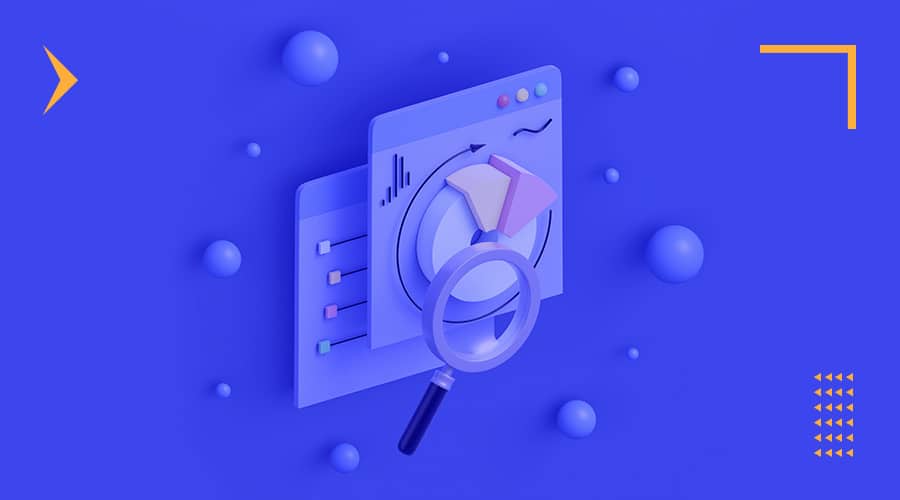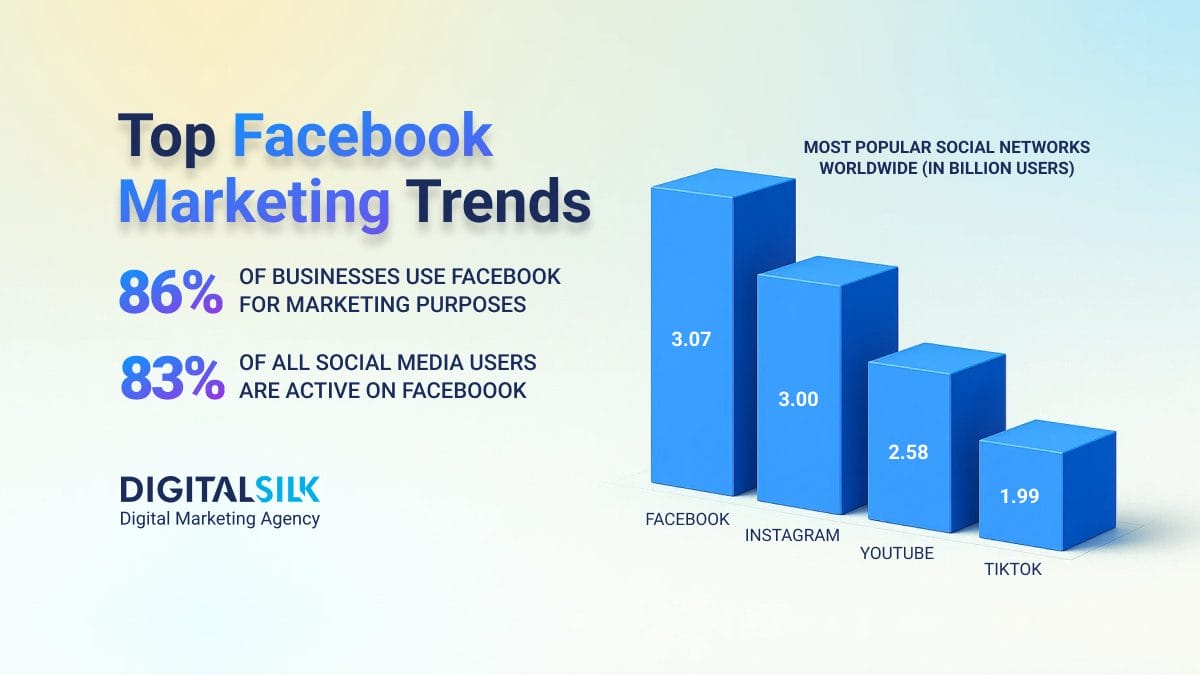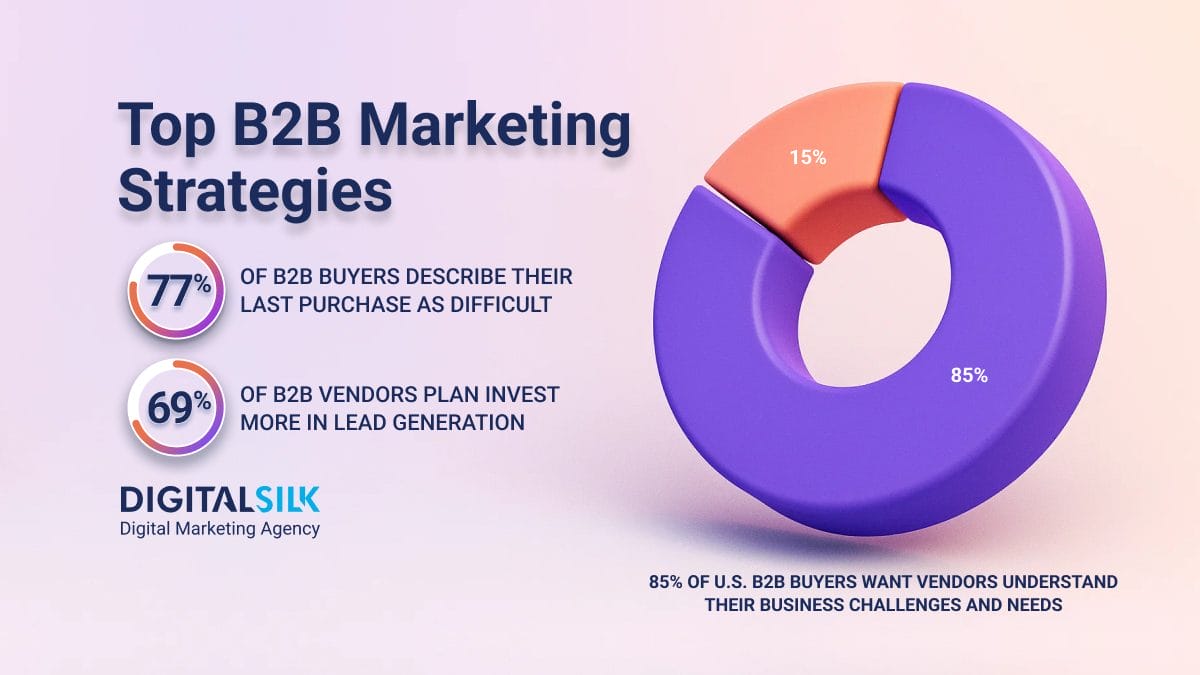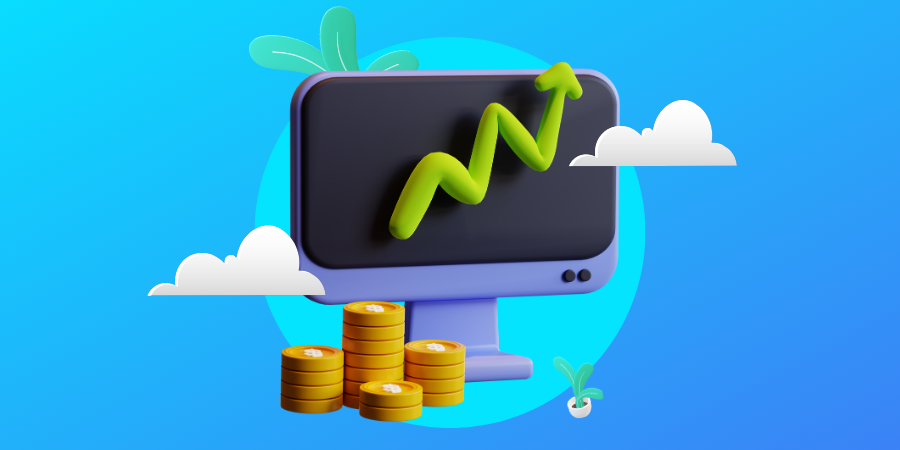B2B SaaS Strategies: Key Highlights
-
Trust is built early: 81% of B2B buyers pick a vendor before talking to sales.
-
Speed defines success: Top SaaS brands design onboarding to deliver value within five minutes.
-
Retention drives growth: Leaders exceed 120% Net Revenue Retention through expansion-first models.
Every January, SaaS marketers publish lists of shiny new tactics, such as AI-written landing pages, VR events and blockchain-enabled funnels.
But when the hype fades, growth still comes from the same foundations: knowing who your buyers are, helping them see value fast and earning their trust through proof.
According to McKinsey’s B2B Pulse 2024, 73% of enterprise buyers are now comfortable making purchases above $50,000 digitally and nearly 40% will spend over $500,000 online, a clear sign that most of the convincing happens long before anyone speaks to sales.
The 15 B2B SaaS strategies below are the ones worth mastering. Each one has worked for years, but the way top SaaS brands execute them today looks different: faster, more personal and built on data, not guesswork.
15 B2B SaaS Marketing Strategies You Should Implement
It’s easy to feel overwhelmed by new tools and tactics promising instant scale.
But the truth is, most long-term SaaS success still comes from mastering the basics then adapting them to today’s digital-first buyer.
These are the strategies worth doubling down on if you want growth that lasts.
1. Write For Real Roles, Not Generic Buyers
Think about the last SaaS blog you read.
Did it sound like it could apply to any company, anywhere, anytime?
That’s the problem.
Buyers need to see that you understand their role, context and industry.
In 2026, the winning content strategy builds clusters: industry pillars + role-based subtopics.
A finance lead in healthcare doesn’t need the same messaging as an ops manager in logistics.
Tailoring your content clusters and creating pillar pages for industries, along with sub-pages for roles, makes your expertise undeniable.
Atlassian’s Team Playbook contains content and toolkits tailored to how different roles, from engineering to leadership, collaborate.
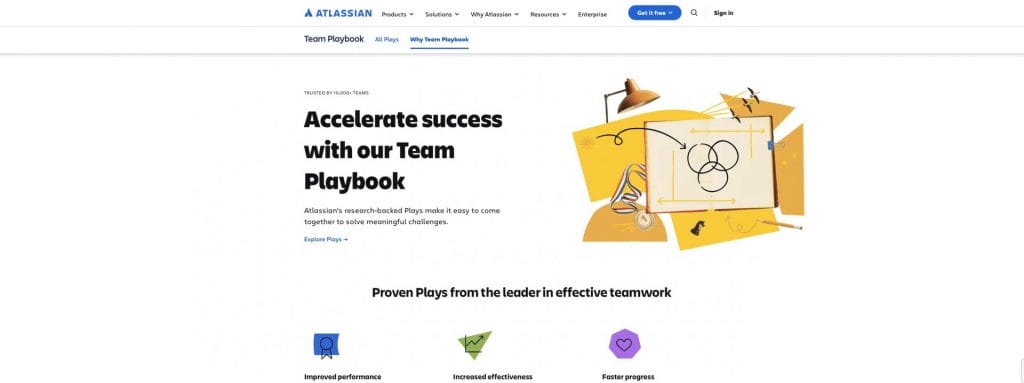
It’s an excellent model for showing domain fluency instead of generic expertise.
How To Run It
- Map content to role + use-case (e.g. “Observability For DevOps In Fintech”)
- Use customer interviews to identify role-specific pain and workflow
- Create modular fragments so you can swap in/out role-specific intros, case studies, stats
2. Let SEO Guide Buyers Into The Product
For years, SaaS teams treated SEO as an awareness play.
However, 53% of all web traffic comes from organic search and the top Google result captures 27.6% of clicks. Ranking well is more than just about visibility. In fact, rankings define conversion flow.
Most buyers land on your site mid-funnel searching “X vs Y software,” “best workflow tool for remote teams” or “does this integrate with Salesforce?”
In 2026, SEO should lead users from query to product fit.
Digital Silk uses SEO content as a conversion funnel, not just an awareness engine.
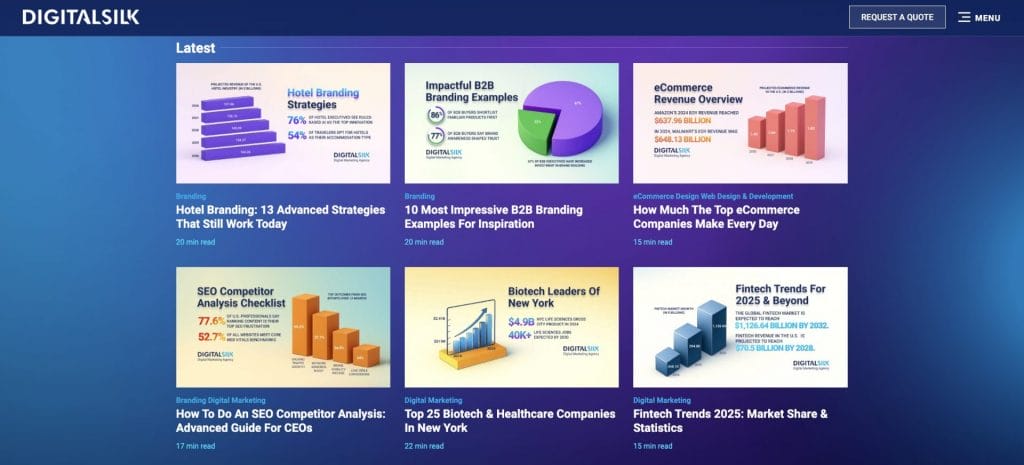
Each article, from SEO statistics to branding trends, is optimized for mid-funnel intent and flows directly into relevant solution pages.
Readers searching for guidance find actionable insights first, then a clear next step toward tailored services.
How To Run It:
- Build pages for “what is,” “how to,” and “comparison” queries
- Optimize integration, pricing and security pages for high-intent searches
- Link every educational asset to an in-product experience
3. SaaS Onboarding Strategy: The Five-Minute Rule
Sign up. Get stuck. Close the tab. That’s the silent killer of SaaS growth.
The truth is, most trial drop-offs aren’t about product quality but about onboarding.
If users don’t hit an “aha” in the first few minutes, you’ve lost them.
Figma delivers its first “wow” within minutes.
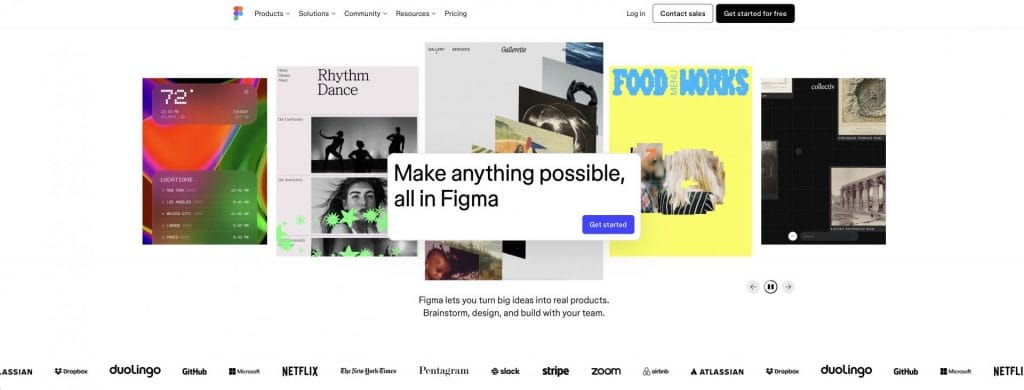
New users can co-edit live files instantly without setup or tutorials.
That immediate proof of value converts curiosity into activation and sets the emotional hook for adoption, which is an embodiment of frictionless, product-led marketing.
How To Run It:
- Design onboarding around one clear “aha” moment
- Use in-app checklists and progress milestones
- Prompt collaboration or personalization early
4. Account-Based Marketing (ABM) Starts Earlier Than You Think
ABM isn’t just a buzzword.
It reflects how buyers actually behave.
In 2024, 81% of B2B buyers said they’d already decided on a preferred vendor before ever engaging a sales rep and 85% reported they had mostly or fully defined purchase requirements before contacting vendors.
If you wait until form fills to personalize, you’re often too late.
One more thing — buyers don’t usually reach out early. Most wait until about 70% through their journey before initiating contact.
And when contact does happen, 82% of the time it’s the buyer who calls first, not vendor outreach.
That means your ABM efforts have to earn attention in the dark, before they ever see your “Request Demo” button.
For instance, Salesforce’s ABM guidance emphasizes early personalization.
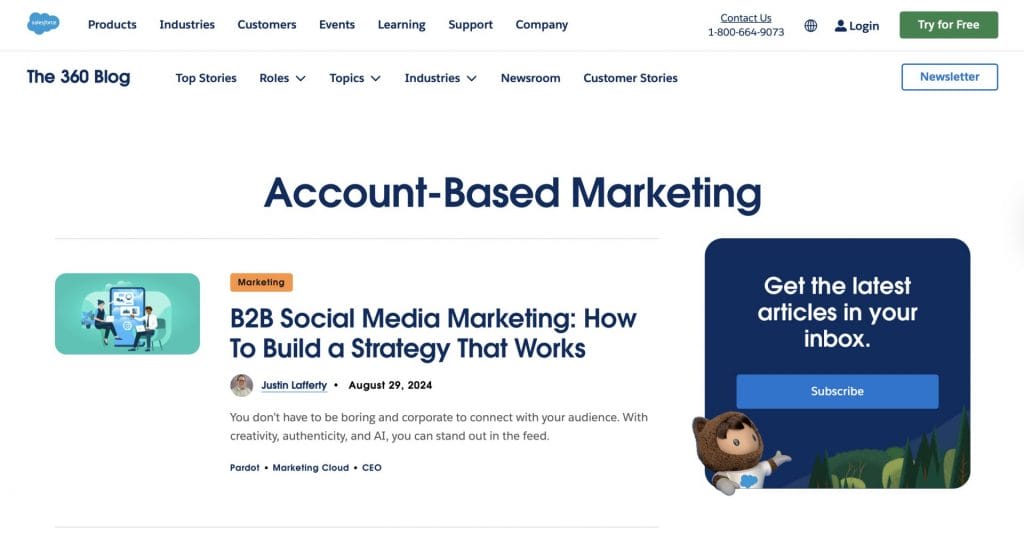
Their ABM hub explains how to use owned content, like microsites and briefs, along with coordinated sales-marketing plays to move accounts from early research to active evaluation.
This approach reinforces the importance of beginning personalization before intent spikes and keeps it connected across channels.
How To Run It:
- Monitor target accounts for hiring surges or compliance changes
- Personalize content long before contact forms
- Align ads, emails and landing pages for each account’s journey
5. Build Trust Through Ecosystem Partnerships
SaaS buyers expect your product to fit into the tools they already use.
In G2’s 2024 Buyer Behavior Report, integration capability ranks as a top buying consideration.
It’s the #1 factor for teams purchasing marketing, sales, customer service and customer success software and it leads overall in APAC.
If your product doesn’t connect, confidence drops fast. Buyers want tools that play well with the rest of their stack.
That expectation also reveals a major challenge.
Only about 29% of enterprise applications are actually integrated and 95% of IT leaders report ongoing difficulties making their systems communicate.
That’s why ecosystem marketing, including integrations, marketplaces and co-marketing, is more powerful than any paid ad.
By showing how you slot into existing workflows, you reduce risk for buyers and piggyback on the trust they already have with other platforms.
Shopify’s App Store ecosystem exemplifies co-marketing at scale.
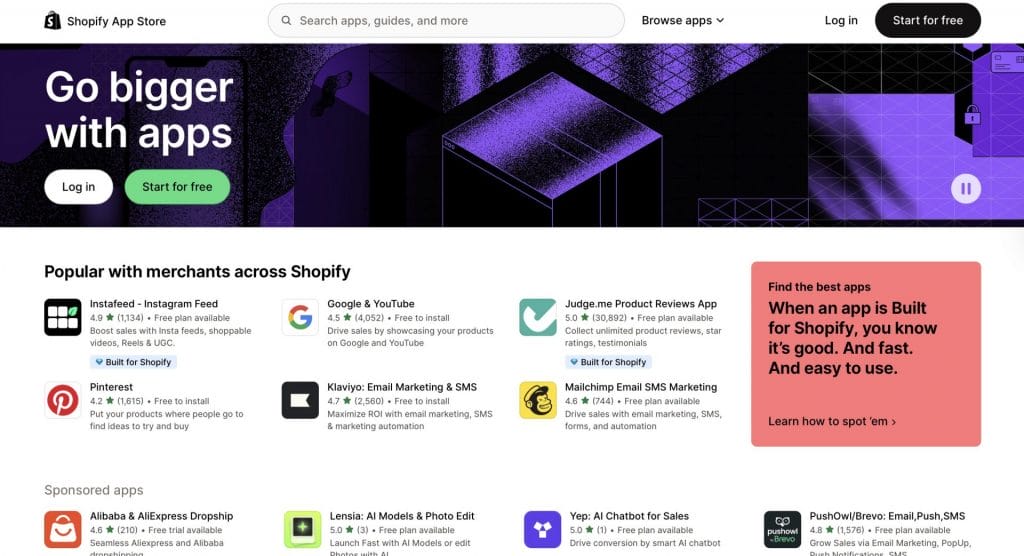
Through integrations with platforms like Klaviyo, Google and Meta, Shopify expands reach while giving customers frictionless compatibility.
Each integration has dedicated landing pages and shared tutorials, proof that ecosystem marketing compounds trust and visibility.
How To Run It:
- Build integrations with widely used platforms
- Publish shared guides with partner products
- Leverage marketplaces for visibility and trust
6. Webinars That Convert, Not Just Inform
The pandemic made webinars explode.
Then fatigue set in.
But they still work when done right.
The key is outcome over overview.
Instead of “Introducing Our New Feature,” frame your session as “Automate Your Weekly Reporting Without Code.”
Keep it short, interactive and guest-driven and bring in a customer or partner to speak, not just your product team.
For instance, Zoom uses its live events hub to run short, customer-led webinars with built-in interactivity and an on-demand library.
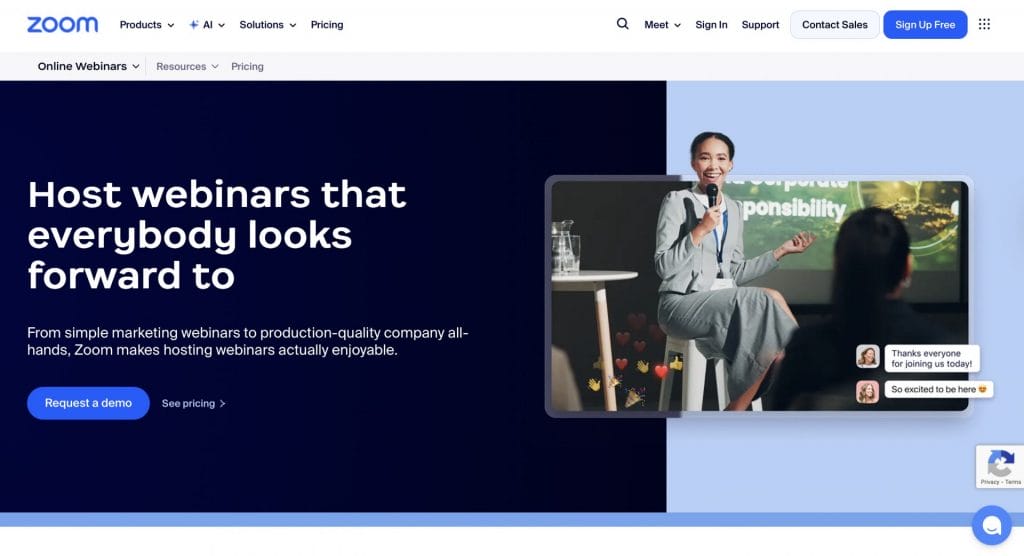
For example, attendees can watch case-based demos, e.g., hybrid meeting optimization, AI-driven analytics, with interactive Q&A.
This format shows how webinars can feel like workshops and not sales decks.
How To Run It:
- Promise a transformation (“Cut Your Customer Onboarding Time in Half”)
- Feature real customer guests
- Offer a takeaway template or workflow
7. Let Customer Voices Drive Credibility
When buyers are close to deciding, they don’t want another feature sheet.
They want reassurance from people like them.
That’s why advocacy and case studies are timeless growth engines.
Slack leans on user stories about scaling communication, not just tool functionality.
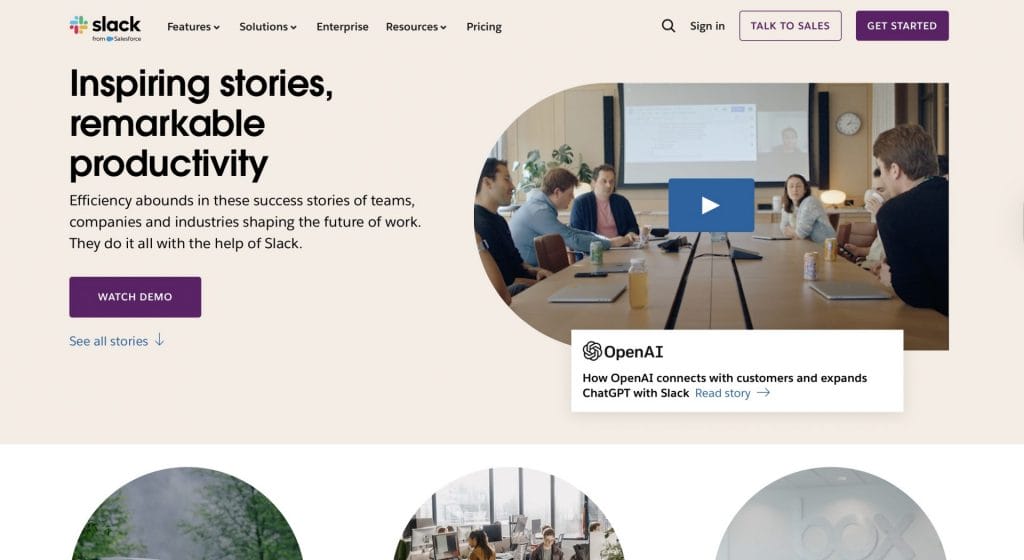
Closer to home, Digital Silk has helped companies like HP increase customer loyalty and offer more user-friendly solutions to their clients.
How To Run It:
- Quantify customer impact
- Use quotes, metrics, and narratives
- Showcase diverse industries and use cases
8. LinkedIn: Reach Decision-Makers Where They Engage
LinkedIn is crowded, but it’s still where decision-makers hang out daily.
The difference in 2026 is sequencing.
Adobe leverages LinkedIn’s Sponsored Content to promote thought leadership and digital strategy insights to marketing decision-makers.
In its ABM campaigns for Experience Cloud, Adobe uses precise account targeting and coordinated sales/marketing outreach to reach entire buying committees.
Together, these efforts show how a brand can layer influence, nurture and engagement on LinkedIn, even if the public sources don’t reveal every step of the funnel.
How To Run It:
- Start with educational or research-driven assets
- Retarget engagers with customer stories
- End with a product offer or trial
9. Paid Search Is Still A Bottom-Funnel Powerhouse
When prospects search “best [tool],” “pricing” or “X vs Y,” they’re ready to buy.
Ignoring those queries means becoming invisible when buyers are about to commit.
ClickUp uses paid search to intercept bottom-funnel intent with precision.
Its Google Ads appear for competitor and solution-aware queries such as “Asana alternative” and “Monday.com vs ClickUp.”
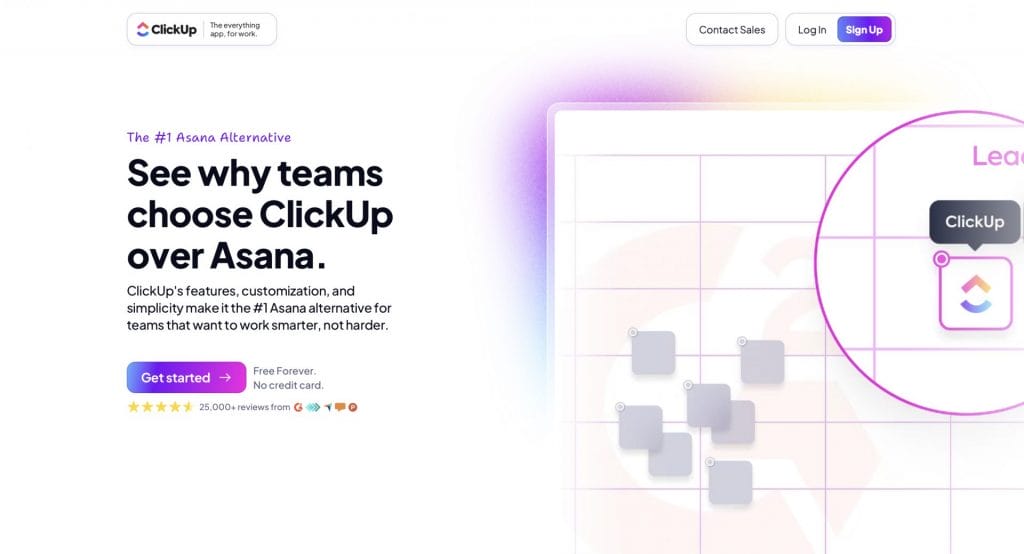
Each ad leads to a comparison landing page that lays out feature differences, ROI proof and a trial CTA above the fold.
This pairing of targeted bidding and intent-matched copy shows why paid search still converts best when buyers are closest to a decision.
How To Run It:
- Target competitor and pricing terms
- Create comparison landing pages
- Sync ad messaging with evaluation-stage needs
10. Use Video To Showcase Workflows, Not Features
Buyers want to see how something works, and short videos accelerate comprehension and trust.
That way, they’re more effective than simple static images.
Video truly is no longer optional. It’s actually the fastest way to make the intangible feel tangible.
Loom showcases bite-sized, role-specific use-case videos, such as support walk-throughs, sales outreach, design feedback and onboarding that teach a single workflow end-to-end.
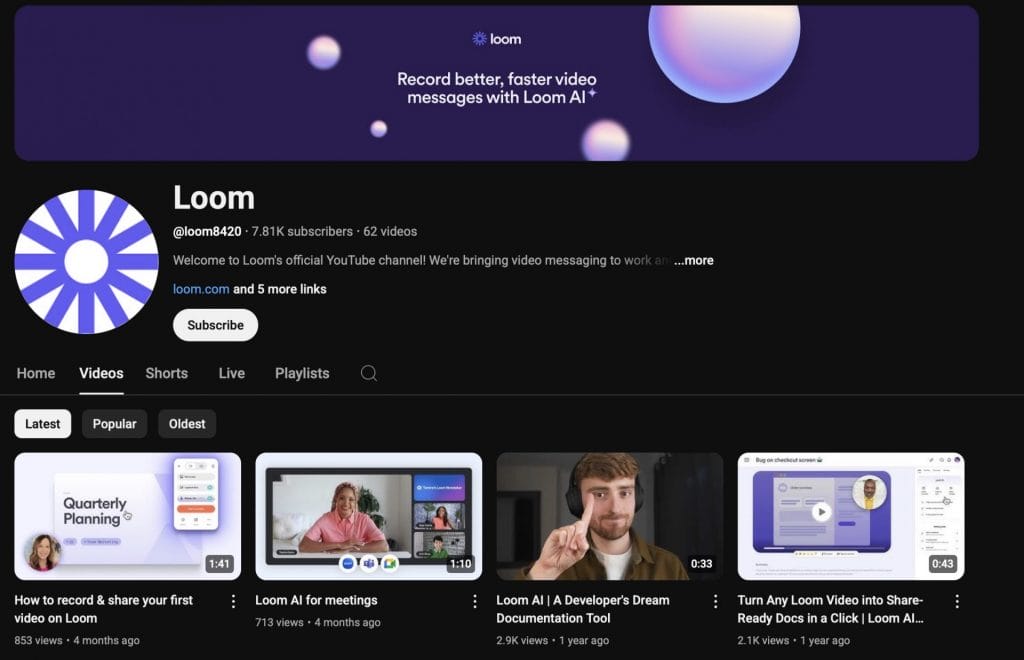
The emphasis is on how work gets done and not on feature lists.
And that’s exactly what you need, i.e., short, contextual videos that make the product’s value tangible in under a minute.
How To Run It:
- Create short, workflow-based videos (under 60 seconds) that demonstrate value in context
- Prioritize real user scenarios such as setup, collaboration or ROI-driven outcomes
- Embed videos across key conversion pages (pricing, product, onboarding) to shorten the decision cycle
- Use captions and platform-specific formats (LinkedIn, YouTube Shorts, in-app) to maximize reach and retention
11. Email Marketing Strategy That Adapts To User Behavior
Email is still one of SaaS’s best ROI channels, but sending everyone the same content is a waste.
It’s essential to focus on delivering the right message at the right moment, rather than just bombarding users with more emails.
Take a leaf out of ProductLed’s newsletter; it shows how thoughtful, relevant content can really help cultivate leads over time.

Visitors who subscribe after reading growth guides receive short, tactical “deep dives” every Sunday, a rhythm that keeps engagement high without aggressive sales pushes.
It’s a reminder that personalization isn’t always about automation, but about relevance and cadence.
How To Run It:
- Trigger nudges when setup stalls
- Send upgrade prompts at usage limits
- Personalize reactivation emails with “what’s new” or “here’s what’s new since you left”
12. Treat Growth Like Product: Measure, Test, Learn
The most successful SaaS teams don’t see marketing campaigns as “done.” They see them as ongoing experiments.
They run two-week growth sprints, set hypotheses, launch, measure and decide to scale or scrap. They track cohort data to see which channels deliver users who actually stick, not just sign up.
This mindset shift, from marketing as a campaign to marketing as a product discipline, separates flat-lining teams from compounding ones.
How To Run It:
- Run short, two-week growth sprints focused on one hypothesis at a time, e.g., “Can reducing form fields increase demo requests by 10%?”
- Track cohort metrics, not just traffic or sign-ups, to measure user retention and activation quality
- Build a shared marketing experimentation board for visibility and accountability
- Use post-sprint reviews to decide whether to scale, iterate or sunset each campaign
13. Thought Leadership Buyers Actually Value
Thought leadership still shapes pipelines when it’s original, credible and timely.
The 2024 Edelman–LinkedIn B2B Thought Leadership Impact Report found that 65% of decision-makers say high-quality thought leadership enhances brand reputation and 55% are willing to pay a premium to work with organizations that publish it.
Adobe Experience Cloud publishes its annual Digital Trends reports based on proprietary research with thousands of global marketers and executives.
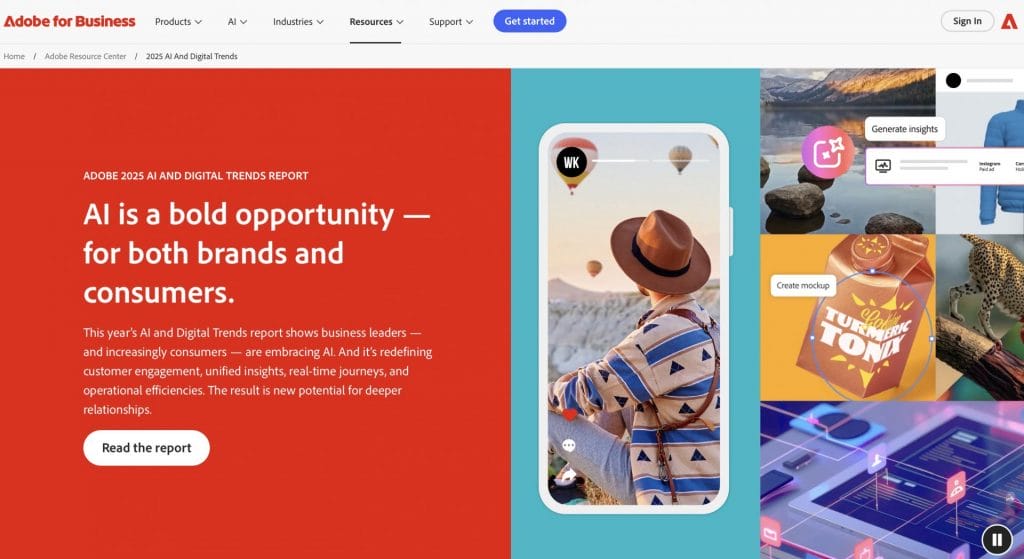
The data is packaged for C-level audiences and linked directly to Adobe’s analytics and CX solutions, prooving that authoritative content builds both reputation and demand.
How To Run It:
- Base insights on first-party data
- Focus on niche expertise, not general trends
- Publish through trusted channels
14. Act On Intent Before The Form Fill
By the time a lead fills out your demo form, they’ve already done most of their research.
The window to influence them starts long before they click “Contact Sales.”
Intent data lets you catch them earlier.
For example, G2’s Buyer Intent platform helps SaaS teams identify accounts actively researching their category before a form fill happens.
Companies use these signals to deliver tailored content and outreach exactly when interest peaks, turning passive research into pipeline.
Demandbase used G2 Buyer Intent data to uncover mid-market accounts showing early research behavior and launched targeted campaigns before any inbound activity.
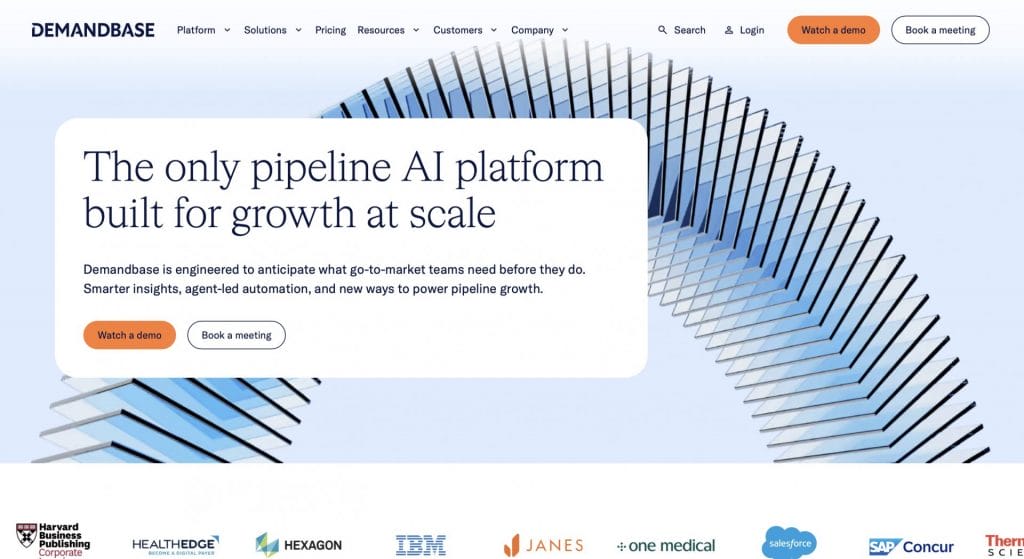
The initiative generated $3.5 million in new pipeline in a single quarter.
Everstage, a sales compensation SaaS, applied the same approach, prioritizing accounts with strong intent signals and engaging them with relevant product stories.
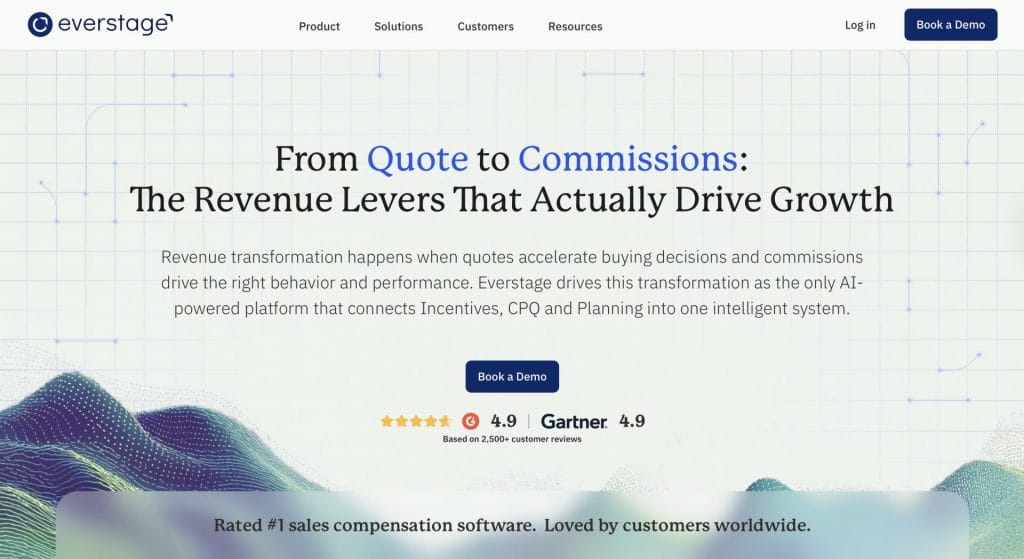
The result is a 50% quarter-over-quarter pipeline increase.
Acting on intent before the form fill lets SaaS teams meet buyers where they are, not where they used to be, creating opportunities competitors won’t even see coming.
How To Run It:
- Monitor companies researching your category or competitors
- Combine intent data with web analytics to pinpoint engaged accounts
- Launch personalized account-based campaigns or targeted sales outreach before prospects ever fill out a form
15. Retention & Expansion Are The Real Growth Engines
It’s easy to obsess over acquisition, but investors and boards are fixated on Net Revenue Retention (NRR).
Why?
Because companies with strong NRR grow faster and more predictably.
According to Wudpecker’s 2025 B2B SaaS Retention Benchmarks, the median NRR across SaaS companies is around 106%, while top performers exceed 120%. This level is linked to faster compounding growth and higher valuation multiples.
Leading SaaS firms are experimenting with usage-based pricing, seat-plus-usage packages and upsell paths that feel like natural growth, not nickel-and-diming.
Notion expanded retention through its Notion AI upsell, embedding premium functionality into the existing workflow rather than gating it behind a paywall.
The result was deeper daily engagement, higher customer lifetime value and stronger product stickiness. proving that true expansion happens when users want to grow with you, not when they’re forced to.
How To Run It:
- Introduce tiered or usage-based pricing that grows with customers
- Launch value-add features that enhance the core product
- Celebrate product milestones or usage achievements directly in-app to build emotional equity
How Digital Silk Has Applied These B2B SaaS Marketing Strategies
At Digital Silk, we’ve helped SaaS and technology-driven brands apply these very principles, turning proven marketing strategies into measurable growth.
Each project demonstrates how clarity, precision and buyer alignment translate into lasting impact.
1. AutogenAI — Turning AI Innovation Into Measurable Growth
When AutogenAI sought to expand its presence in the U.S. market, we built an SEO-optimized and conversion-driven website that highlighted credibility and industry expertise.

Through integrated HubSpot analytics, structured PPC campaigns and refined messaging for enterprise buyers, the brand achieved a 648% increase in sessions and a 299% lift in engaged sessions within the first three months, prooving that strategic positioning and data-led marketing drive fast, sustainable results.
2. Devensoft — Redefining SaaS Engagement Through UX & Conversion Optimization
For Devensoft, a B2B SaaS in the M&A space, we transformed a static website into a high-performing acquisition channel.
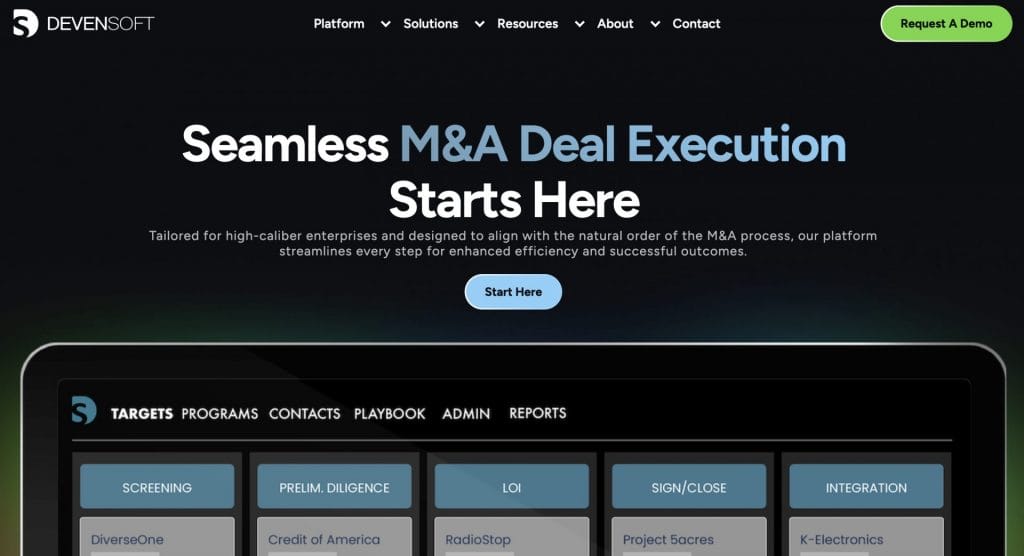
Our team rebuilt the UX and conversion flow around user intent, simplifying navigation and emphasizing value-based messaging.
The results included a 45.9% increase in active users, a 46.65% rise in engaged sessions and higher engagement rates year over year, showing that growth compounds when frictionless UX meets precise storytelling.
3. H2 Compliance — Building Trust & Awareness For A SaaS Launch
As H2 Compliance prepared to expand its regulatory technology offering, we developed a sector-based website architecture and interactive compliance map that positioned the brand as an industry authority.
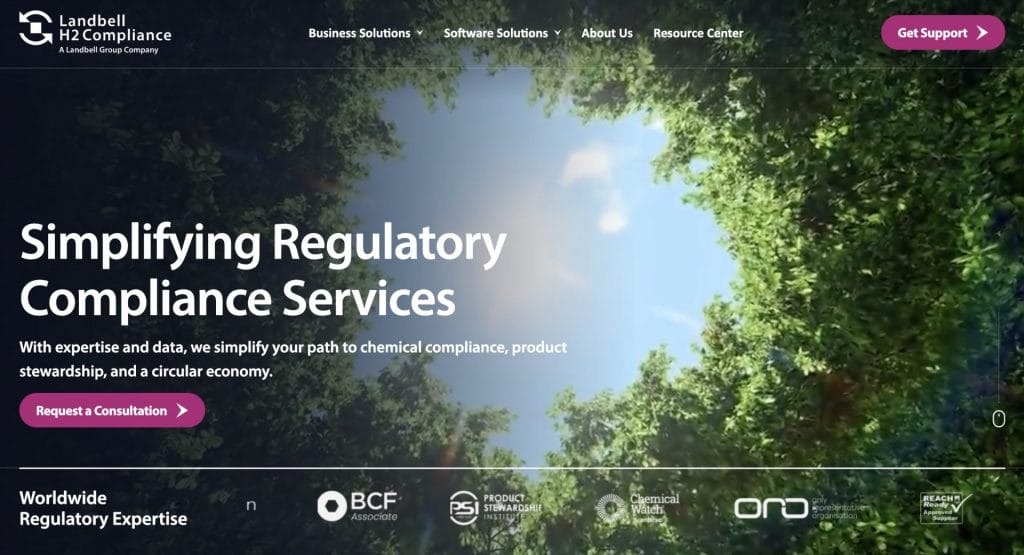
The launch delivered a 157% increase in organic traffic within weeks, longer session durations and higher engagement, a testament to the power of clear structure and data-backed SEO for emerging SaaS platforms.
4. doForms — Streamlining The Trial Journey For Faster Value Realization
We partnered with doForms to reimagine the trial-to-adoption experience.

By restructuring the sitemap, simplifying onboarding paths and aligning SEO and paid search around high-intent use cases, the brand achieved a 22% increase in new traffic within two months.
The new experience helped users reach “first value” faster, which is the cornerstone of any successful product-led growth strategy.
Bonus SaaS Marketing Strategies For 2026 & Beyond
The next phase of B2B SaaS growth will favor teams that balance innovation with intention, using technology to enhance, not replace, human insight.
AI-Assisted Content With Editorial Safeguards
Generative AI will keep accelerating SaaS content production, but quantity without oversight kills trust.
In 2026 and beyond, top-performing SaaS brands will no longer brag about “AI content at scale.” They’ll be talking about AI-accelerated accuracy.
How to run it:
- Define AI’s role: Use it for research outlines, tone harmonization and data summarization, never for claims or final thought leadership.
- Add a human editorial layer: Every AI-generated asset should be verified by a subject-matter expert for factual accuracy, brand tone and legal compliance.
- Log and tag outputs: Maintain an internal record of which drafts were AI-assisted to ensure accountability in future audits.
AI can make your workflow faster — but human precision is still what earns trust, rankings, and authority.
Micro-Activations & Hybrid Experiential Touch
Even in a digital-first world, humans buy from humans.
In 2026, SaaS teams are reintroducing micro-activations: small, interactive experiences that blend digital and real-world touchpoints.
Examples:
- Invite power users to closed beta “coffee chats” or 15-minute demo clinics
- Pair webinars with physical mailers (e.g., send a printed workbook before a live virtual workshop)
- Host hybrid product demos streamed live from conferences or user offices.
These small gestures build emotional connection and memory.
When buyers feel part of something tangible, loyalty and retention soar.
Caveats, Risks & How To Adapt
Even the smartest playbooks can fail without the right context.
Here’s what to watch for:
- Signal overload: Too many analytics tools can create noise. Pick metrics tied to value, e.g., activated users, retained revenue.
- AI drift: Over-automation risks generic messaging and compliance issues. Keep humans in the loop.
- Misaligned incentives: Marketing and sales must share attribution models; otherwise, ABM and intent campaigns lose continuity.
- Economic slowdowns: When budgets tighten, prioritize retention and existing customers over pure acquisition.
- Adaptation principle: Audit quarterly. What worked last quarter might plateau the next. Build feedback loops, like this: data → decision → iteration, so strategy never becomes static.
Drive B2B SaaS Growth With Digital Silk
SaaS marketing success comes from precision, aligning strategy, data and customer experience to shorten sales cycles and increase retention.
Brands that evolve their funnels, personalize by role and act on buyer intent before the form fill build trust faster and grow revenue more predictably.
At Digital Silk, we help SaaS companies design end-to-end marketing ecosystems that convert attention into adoption, from data-driven SEO and performance campaigns to product-led onboarding experiences and retention strategies that scale.
As a full-service digital marketing agency, our services include:
- Digital marketing strategies
- SEO services
- Content marketing
- PPC management
- Email automation and lifecycle marketing
- Branding and creative services
- Custom web design and product experience optimization
Our award-winning team delivers measurable growth through transparent collaboration, proactive management and a shared focus on outcomes.
Contact our team, call us at (800) 206-9413 or fill in the Request a Quote form below to schedule a consultation.
"*" indicates required fields




